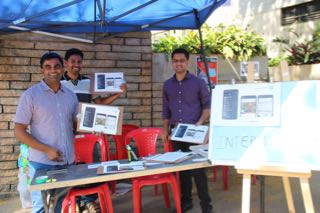[Maheima Kapur is an advisor to the Fastah Project, she helps the team make software that people want. She is a guru on consumer insights and marketing, and the founder of Talking Street.]
If you build it, will they come? For the technology builders amongst us, here are the ways to find if users will see value in what you build, and how to practice the subtle art of asking question and listening to answers.
Entrepreneurs sometimes have a tendency to build something, because they want to build it. That’s a slippery road to be on. While it could sometimes translate into good products that users embrace, it is more likely that a product built without listening in, will need significant modifications, sometimes face-changing alterations, before users warm up to it.
Having learnt it the hard way, I now believe in following a simple principle of understanding the users by listening to them, before any product development kicks in. Here are the steps we followed as part of our Understand the User journey.
Define your target audience.
Understand their needs, requirements and challenges. Also understand their joys. Who are likely to be the first adopters of the product? Define them demographically – age, gender, education, socio-economic status. Define them psycho-graphically – what are their motivations? What gives them joy? What bothers them?
Get into conversations with them.
Ask them general questions about what they do and why. Make it conversational to put them at ease. After a generic conversation, come around to asking questions around your product idea. What do they think of the idea? Does it solve something for them? Do they see themselves using a product like this? Will they pay for it? Test your hypothesis with them. Use visual aids to help them understand the idea and communicate the potential benefits.
Listen hard.
Leave your biases. As idea generators we all think that the idea we have is here to change the world. It is seldom that easy and even if it is a world-changing idea, it will take lots of help from users before its power starts showing. So listen to them without any pre-conceived notions or biases.
Speak to multiple users.
Depending on your definition of the target audience, you’ll be able to come up with different ways to slice the users. Try and speak to as many users as you can. Anywhere from 10-20 one-on-one conversations is a good idea to get a statistically (well, almost) significant set of observations.
Record your key observations and inferences.
Make sure your document your key observations and inferences after each conversation so that you can go back to your notes and refer to them when needed.
Now that you have a bank of user conversations, refer to them to draw up the final blueprint of your product, and then every time you think of adding or changing something in it.

